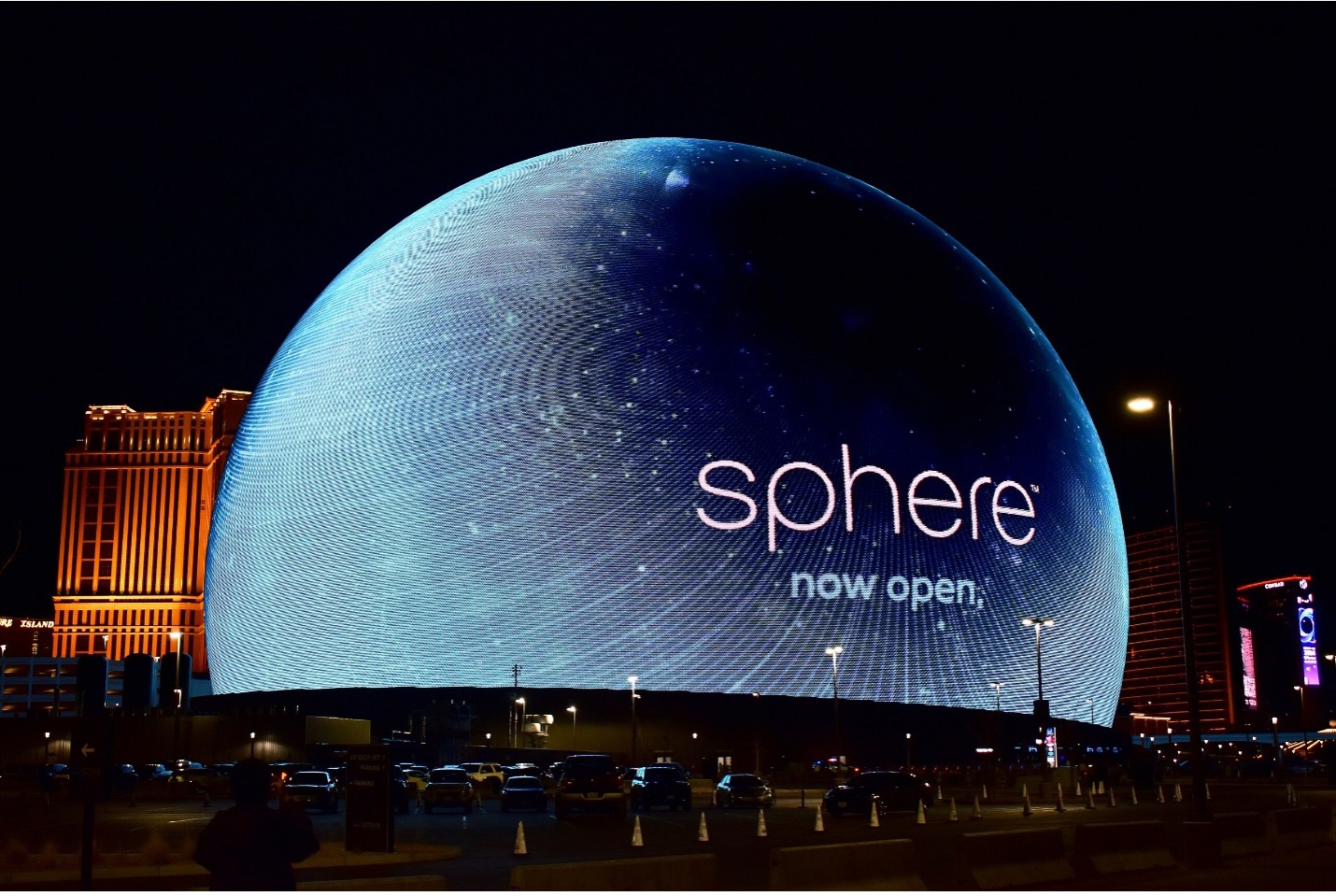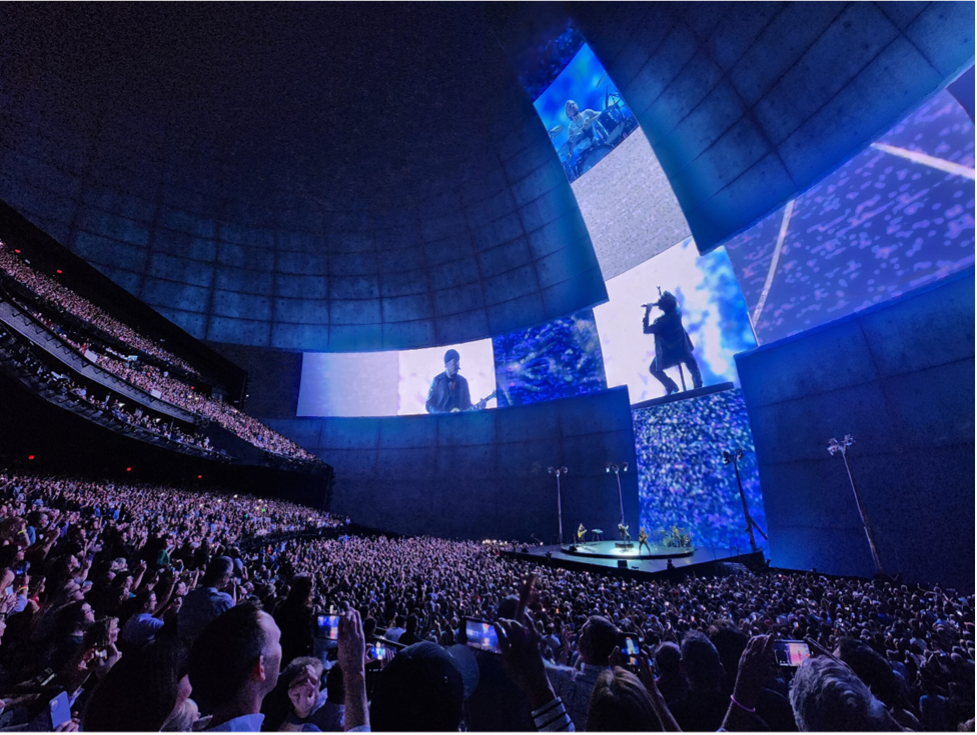The Sphere at the Venetian Resort in Las Vegas is a music and entertainment arena featuring a massive 18,600-seat auditorium with cutting-edge video and audio capabilities, including a 16K-resolution LED screen and advanced speakers. The exterior boasts a 580,000-square-foot LED display. The technology behind it was revealed at Nvidia’s GTC conference, showcasing two enormous displays driven by 150 Nvidia A6000 GPUs, feeding a total of 16 million LEDs. The system relies on Nvidia’s BlueField-3 DPU, DOCA Firefly Service, and Rivermax software for uninterrupted data streaming, making it a showcase for Nvidia’s technology and capabilities.
The music and entertainment arena Sphere at the Venetian Resort in Las Vegas opened on September 29, 2023. Designed by Populous, the Madison Square Garden company announced the project in 2018, known then as the MSG Sphere. The owners boasted about its huge immersive video and audio capabilities and 18,600-seat auditorium, including a 16K-resolution wraparound LED screen, advanced speakers, and what they are calling its 4D physical effects.

The exterior features a massive 580,000 square feet of LED displays. The arena cost $2.3 billion, making it by far the most expensive entertainment venue built in Las Vegas.
But few technical details were released about the technology behind it until six months later at Nvidia’s GPU Technology Conference (GTC), in March 2024 in San Jose, California. Like everything about the Sphere, the numbers are staggering.
The Sphere has two enormous displays, one outside and one inside. The internal screen is called the Media Plane, and it measures 160,000 square feet and operates at 16K resolution. The external display is called the ExoSphere. It has 1.2 million LED modules (the developers call them pucks). Each display module contains 48 LEDs, which doesn’t sound like very many but was deliberate. This enables the modules to be tiled across a compound concave surface for the interior and a convex surface for the exterior, giving the surfaces a smooth appearance.
Both displays are driven by 150 Nvidia A6000 GPUs. That comes to 8,000 external models for each GPU, or 384,000 LEDs. Combined with the interior LED tiles, each GPU is connected to 16,000 modules of 48 LEDs.
Feeding the beast
All those LEDs have an insatiable appetite and need a constant, uninterrupted stream of data to deliver the effects the promotors promise. As luck would have it, Nvidia just happens to have such gear—their BlueField-3 DPU with 400 Gbps Ethernet or NDR 400 Gbps InfiniBand network connectivity, combined with Nvidia’s DOCA Firefly Service and Nvidia Rivermax software for media streaming through Nvidia ConnectX-6 Dx NICs. Besides the spectacular demonstrations the Sphere provides, it is also a living catalogue of Nvidia technology and capabilities.
Not just any content can be used in the Sphere. An entity called Sphere Studios in Burbank, California, creates the unique immersive content for the venue. The facility created what it calls the Big Sky camera system for capturing uncompressed 18K images from a single camera, which negates the need for stitching together multiple camera feeds. The studio also uses custom image processing software running on Lenovo servers, which are powered by Nvidia A40 GPUs along with 3D video, virtualization, and ray tracing as well.
Earlier this year, former Display Daily Editor Bob Raikes went behind the scenes of this technological wonder and discussed the tech with those who built the venue. Also see Display Daily’s article on the Sphere and visual AI.
